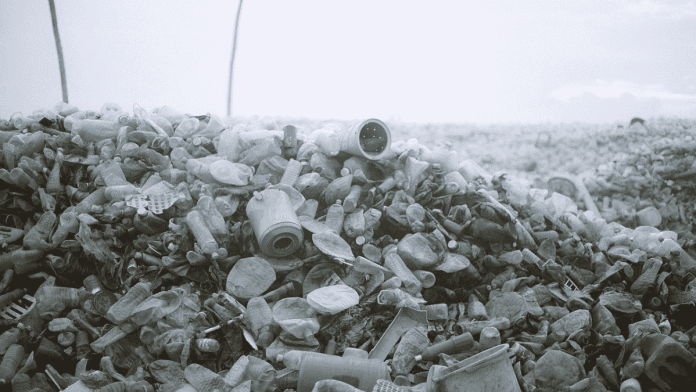New Delhi: It’s raining plastic in Patna, quite literally. A first-of-its kind study in India conducted by the Indian Institute of Technology, Patna (IIT Patna) has found the presence of microplastics in rainwater samples from the city.
Microplastics (MPs) — minute plastic particles that are smaller than 5 mm in diameter — are major environmental pollutants and usually result from the breakdown of larger plastic particles.
The study, published in the Journal of Hazardous Materials on 19 June, was conducted by Subrata Hait, an associate professor at the department of civil and environmental engineering at IIT Patna, and Neha Parashar, a doctoral research scholar at the institute.
The researchers, who collected rain samples from urban and peri-urban areas of Patna, found that the urban area had 1959 MPs per square metre each day — a number that, according to the study, was second only to Shanghai, China (2644 MPs/sq. m).
While such research has been previously conducted in countries such as the United Kingdom, Ireland and Canada, this is the first time it has been done in India.
“Studies have been conducted on microplastic presence in oceans and water bodies in India, but not in the atmosphere. Our research was aimed to fill this gap”, Hait told ThePrint.
The findings, according to the authors, are also significant because they represent a larger problem in India. A study published in the journal Science in 2015 showed that India ranked 12th among the countries with improper management of waste plastics and was projected to be ranked fifth by the year 2025.
On 1 July, 2022, India banned the manufacture, import, stocking, distribution, sale and use of identified single-use plastic items that have “low utility and high littering potential”.
Microplastics in the atmosphere are a major health hazard — studies have shown that they can lead to lung inflammation and increase the possibility of reproductive issues, cancer, and genetic mutations. A major reason is that the immune system is unable to flush them out easily, causing long-term health problems.
Also Read: From spoons to flags, how govt’s plastic ban aims to phase out ‘low-utility’ single-use items
What the study says
Funded by IIT Patna, the researchers collected rainwater samples from two sites in Patna — one urban and one peri-urban. “It was collected over a period of 63 days from June to October 2022, during the monsoon season,” said Parashar.
The samples were processed, and plastic particles were studied for density, colour, composition, and source.
“Our study used the same well-established methods developed by studies in other countries, with small changes in the collection of samples. This also allowed us to compare our results with other countries,” Parashar said.
Researchers then compared their results with the findings of similar studies conducted in 17 other countries, and found that India had one of the highest concentrations of microplastic deposition in the world. The study also found a higher concentration in the urban area (1959 MPs/ sq.m a day) compared to the semi-urban area (1320 MPs/sq. m a day).
The researchers specifically focused on atmospheric fallout — that is, the sedimentation of dust or fine particles from the atmosphere, which results in land and water pollution.
“Microplastics in the atmosphere lead to air pollution, often entering human lungs since they are suspended in air,” Hait explained to ThePrint. “But we studied atmospheric fallout specifically, so they’re the plastic particles that fall to the ground — these aren’t responsible for air pollution, but do cause soil, water and groundwater pollution.”
The study revealed that microplastics have the potential to attach themselves to other suspended particles in the air, leading to an increase in their toxicity.
In their research, Parashar and Hait also classified the different types of microplastics they found in the samples. According to the authors, the most commonly found kinds were polypropylene (PP), and polyethylene terephthalate (PET) plastic.
“These are plastics found in clothing, packaging, and even vehicular emissions from tyres,” Hait said.
Researchers said that through the study, they want to contribute to the global understanding of microplastic deposition in the atmosphere. Hait put down the high microplastic deposition in India to poor waste management.
“Although more research needs to be done, India is a developing country with plastic waste pollution. Patna specifically is one of the most polluted cities in India,” he said, referring to Swiss company IQAir’s report on air pollution earlier this year. The report counted Patna and six other cities in Bihar as among the world’s most polluted.
Parashar also spoke of the need to conduct more research on microplastics and nanoplastics. “Research in this area has been conducted in cities like Paris, Germany, and London with temperate climates, but more developing countries and tropical regions also need to be studied,” she said, adding that it’s necessary to expand the scope of the study to understand how MPs travel through the environment — from the air to land or water, and also into human bodies.
(Edited by Uttara Ramaswamy)
Also Read: Burning of twigs, dry leaves for warmth & vehicles biggest pollutants in Delhi, shows study






